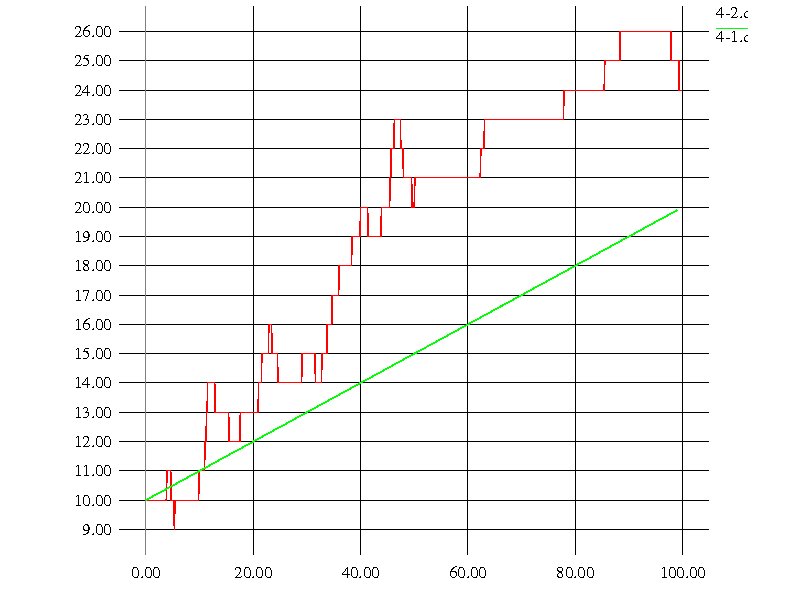/* Individual Based Model RULE: An event A that occurs with probability P is equivalent to 1) Generate a random number X that distributes uniformly between 0 and 1. 2) If X < P, we assume the event A has occured. Otherwise, the event A did not occur. ***************************** Immigration-Emigration model dn/dt=(a-b) We also assume that the change of the population size within time interval ’t is at most }1. This means that only one of the following three cases occurs mutually exclusively during ’t; 1) an individual joins, 2) an individual quits, 3) no change, with probability Ώ’t, ΐ’t, 1 - Ώ’t - ΐ’t, respectively. This would be satisfied if we assume the interval ’t is so small that the population size changes }1. According to the above rule, 1) we draw a uniformly distributed random number X, 2) If X falls between 0 and Ώ’t the population size is incremented by one, or 3) If X falls between Ώ’t and Ώ’t + ΐ’t, it is decremented by one, and 4) Otherwise, the population size does not change. */ #include#include #include #define ALPHA 0.3 #define BETA 0.2 #define INTV 10 #define DT 0.1 /*h ͺ*/ #define IM1 2147483563 #define IM2 2147483399 #define AM (1.0/IM1) #define IMM1 (IM1-1) #define IA1 40014 #define IA2 40692 #define IQ1 53668 #define IQ2 52774 #define IR1 12211 #define IR2 3791 #define NTAB 32 #define NDIV (1+IMM1/NTAB) #define EPS 1.2e-7 #define RNMX (1.0-EPS) double ran2(); unsigned long int idum =1024; main() { int pop_size; /*population size*/ double step; /*j;step number*/ double prob1,prob2, rand_uniform; /*for probabilities*/ prob1=ALPHA*DT; prob2=BETA*DT; pop_size=10; /*initial population size*/ for(step=0.0;step<1000.0;step++) { printf("%f %d\n",step*0.1, pop_size); rand_uniform = ran2(&idum); if (rand_uniform < prob1) pop_size++; else if (prob1 < rand_uniform && rand_uniform < prob1 + prob2) pop_size--; if (pop_size < 0) pop_size = 0; /*pop.size cannot be negative */ } return 0; } double ran2(long *idum) { int j; long k; static long idum2=123456789; static long iy=0; static long iv[NTAB]; float temp; if(*idum <= 0){ if(-(*idum) < 1) *idum=1; else *idum = -(*idum); idum2=(*idum); for(j=NTAB+7; j>=0; j--){ k=(*idum)/IQ1; *idum=IA1*(*idum-k*IQ1)-k*IR1; if(*idum < 0) *idum += IM1; if(j < NTAB) iv[j] = *idum; } iy=iv[0]; } k=(*idum)/IQ1; *idum=IA1*(*idum-k*IQ1)-k*IR1; if(*idum < 0) *idum += IM1; k=idum2/IQ2; idum2=IA2*(idum2-k*IQ2)-k*IR2; if(idum2 < 0) idum2 += IM2; j=iy/NDIV; iy=iv[j]-idum2; iv[j]=*idum; if(iy<1) iy += IMM1; if((temp = AM*iy) > RNMX) return RNMX; else return temp; }
oΝΚ

Back to C Language

